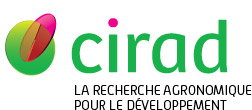Murri Séverine, Madrières Sarah, Tatard Caroline, Piry Sylvain, Benoit Laure, Loiseau Anne, Pradel Julien, Artige Emmanuelle, Audiot Philippe, Leménager Nicolas, Lacote Sandra, Vulin Johann, Charbonnel Nathalie, Marianneau Philippe, Castel Guillaume. 2020. Detection and genetic characterization of Puumala orthohantavirus S-segment in areas of France non-endemic for nephropathia epidemica. Pathogens, 9 (9):721, 17 p.

|
Version publiée
- Anglais
Sous licence  . .
613425.pdf Télécharger (2MB) | Prévisualisation |
Quartile : Q2, Sujet : MICROBIOLOGY
Résumé : Puumala virus (PUUV) in Europe causes nephropathia epidemica (NE), a mild form of hemorrhagic fever with renal syndrome (HFRS). The incidence of NE is highly heterogeneous spatially, whereas the geographic distribution of the wild reservoir of PUUV, the bank vole, is essentially homogeneous. Our understanding of the processes driving this heterogeneity remains incomplete due to gaps in knowledge. Little is known about the current distribution and genetic variation of PUUV in the areas outside the well-identified zones of NE endemicity. We trapped bank voles in four forests in French regions in which NE is considered non-endemic, but sporadic NE cases have been reported recently. We tested bank voles for anti-PUUV IgG and characterized the S segment sequences of PUUV from seropositive animals. Phylogenetic analyses revealed specific amino-acid signatures and genetic differences between PUUV circulating in non-endemic and nearby NE-endemic areas. We also showed, in temporal surveys, that the amino-acid sequences of PUUV had undergone fewer recent changes in areas non-endemic for NE than in endemic areas. The evolutionary history of the current French PUUV clusters was investigated by phylogeographic approaches, and the results were considered in the context of the history of French forests. Our findings highlight the need to monitor the circulation and genetics of PUUV in a larger array of bank vole populations, to improve our understanding of the risk of NE.
Mots-clés Agrovoc : distribution géographique, campagnol, variation génétique, phylogénie, Enquête pathologique, hantavirus, dynamique des populations, évolution
Mots-clés géographiques Agrovoc : France, Europe, région méditerranéenne
Mots-clés libres : Myodes glareolus, Puumala virus, Diversity, Molecular evolution, Nephropathia epidemica, France
Agences de financement hors UE : Agence Nationale de la Recherche
Projets sur financement : (FRA) Mediterranean Center for Environment and Biodiversity
Auteurs et affiliations
- Murri Séverine, ANSES (FRA)
- Madrières Sarah, ANSES (FRA)
- Tatard Caroline, INRAE (FRA)
- Piry Sylvain, INRAE (FRA)
- Benoit Laure, CIRAD-BIOS-UMR CBGP (FRA)
- Loiseau Anne, INRAE (FRA)
- Pradel Julien, INRAE (FRA)
- Artige Emmanuelle, INRAE (FRA)
- Audiot Philippe, INRAE (FRA)
- Leménager Nicolas, CIRAD-BIOS-UMR CBGP (FRA)
- Lacote Sandra, ANSES (FRA)
- Vulin Johann, ANSES (FRA)
- Charbonnel Nathalie, INRAE (FRA)
- Marianneau Philippe, ANSES (FRA)
- Castel Guillaume, INRAE (FRA) - auteur correspondant
Source : Cirad-Agritrop (https://agritrop.cirad.fr/613425/)
[ Page générée et mise en cache le 2025-10-01 ]




